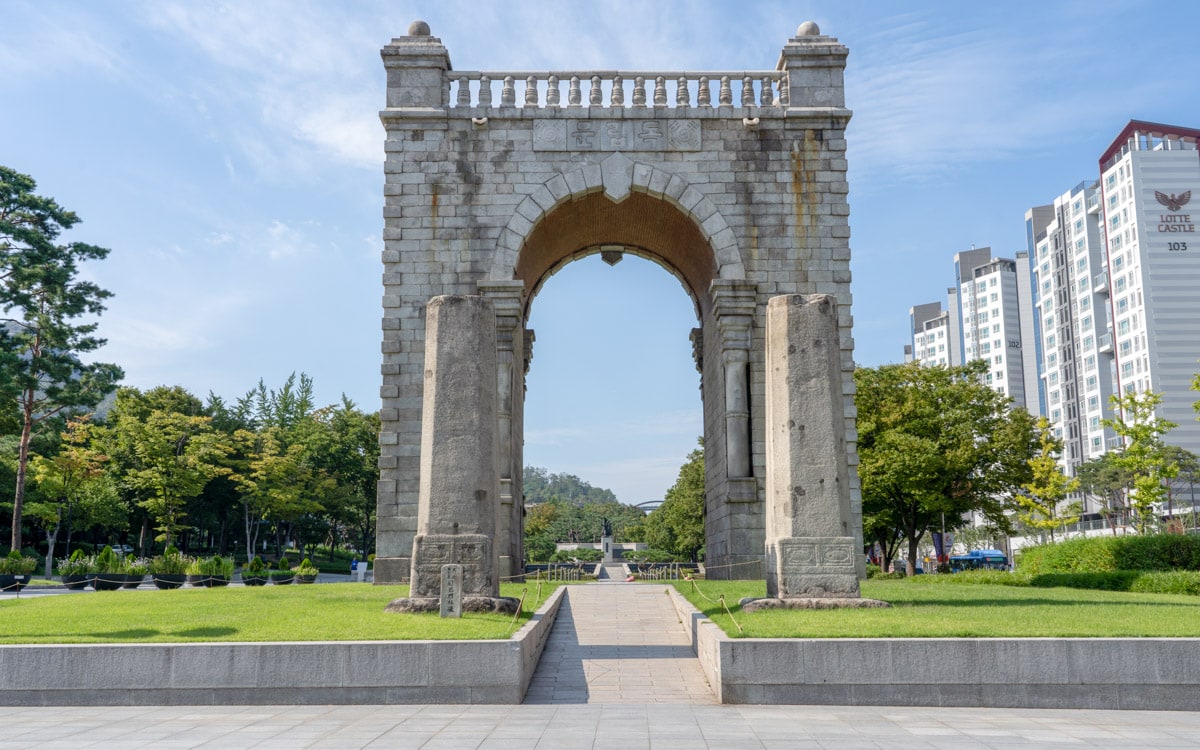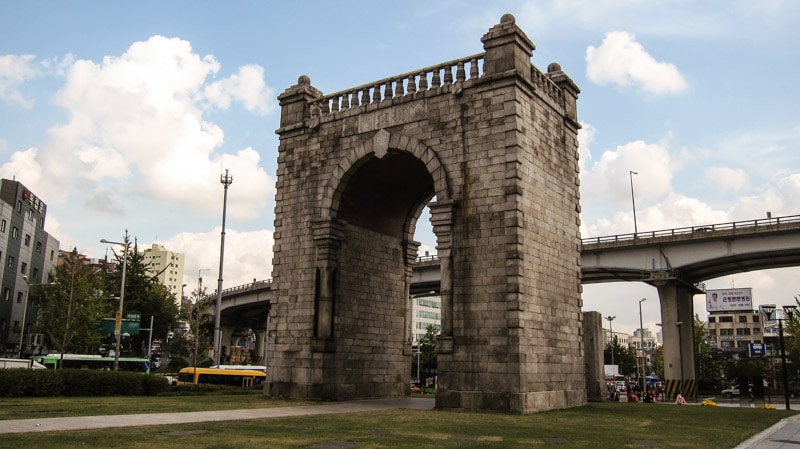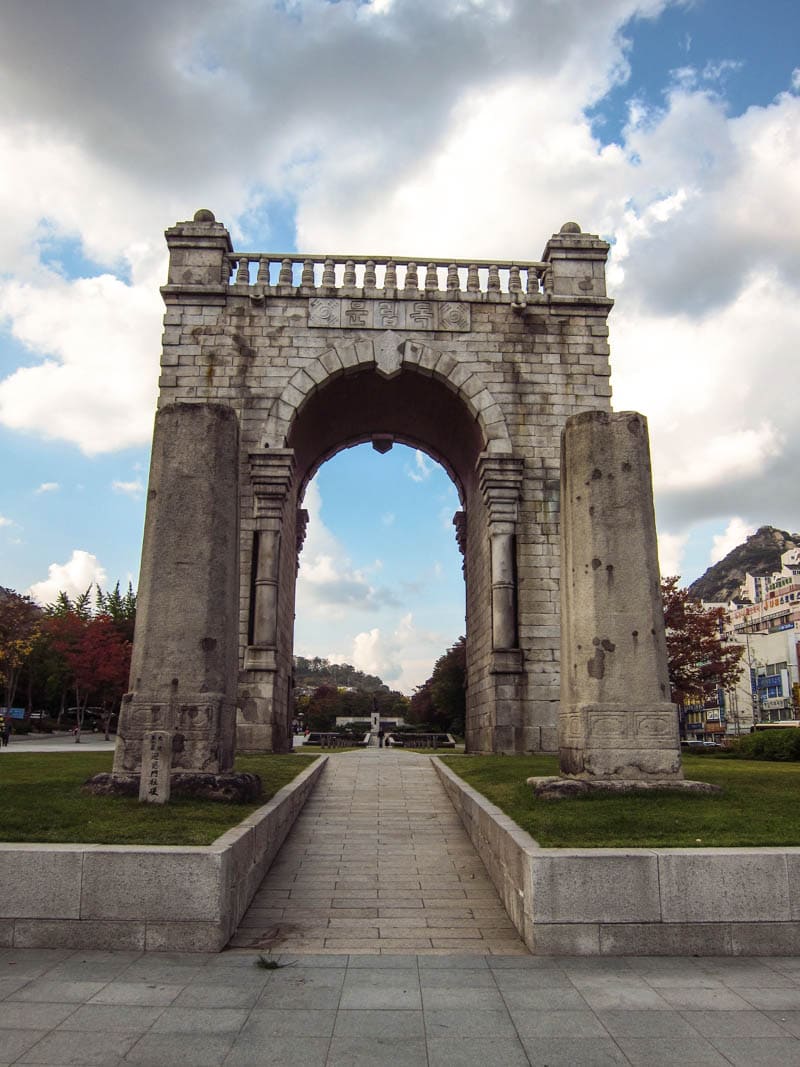
Dongnimmun Gate (Independence Gate) is a memorial built to honor the Korean people and their fight for national independence over foreign intervention. The gate is located in the southeastern corner of Seodaemun Independence Park near Seodaemun Prison History Hall.
A gate known as Yeongeunmun once stood at this location. It was here where Chinese and other foreign envoys were received and greeted. Envoys received their tribute from Joseon monarchs here as they arrived in Korea.
During the late 1800s, Joseon politics were in a midst of disarray. A movement known as the Gabo Reform, which took place from 1894 to 1896, aimed to reform the government through sweeping internal and systematic changes.
Due to foreign intervention, the reform was unsuccessful causing Korea to fail at gaining national independence.

A new symbolic monument and gate was desired at this location after the Qing Dynasty Chinese army defeated the Meiji Japanese army after the First Sino-Japanese War from 1894 to 1895.
On November 21, 1896, construction on Dongnimmun began. The gate was built to symbolize the continued determination of a free Korea without foreign interference. Construction on the gate was completed on November 20, 1897.
The design was created by architect Sim Uiseok with approval of the king and a group of activists from the Independence Club, formed and led by Seo Jaepil. The design was modeled after the Arc de Triomphe in Paris, France.
In response to Korea’s independence, King Gojong proclaimed himself the first emperor of Korea in 1897.

Made of granite, the gate features a large rainbow shaped passageway. The gate stands 14.28 meters (46 feet) high and 11.48 meters (37 feet) wide. A stone staircase on the left side of the gate leads up to the top. A plaque over the arch features plum blossoms which was a symbol of the Great Han Empire.
Dongnimmun Gate (Independence Gate) was originally located 70 meters (229 feet) to the southeast. In 1979, the gate was restored and moved to its current location.
Table of Contents
Dongnimmun Gate Independence Gate Hours
24 hours
Admission
FreeHow to get to Dongnimmun Gate Independence Gate
Take Subway Line 3 to Dongnimmun Station (Exit 4).
After exiting, continue for 270 meters.
Map
Additional Resources
Rakuten
Save money while exploring Seoul with Rakuten's cashback program. By booking hotels through Rakuten, visitors can earn cashback rewards and enjoy significant savings. Exclusive partnerships and deals make stays in Seoul more affordable, freeing up funds for attractions, dining, and other experiences. I use Rakuten for cashback on all of my hotel stays in Seoul.
If you sign up using the link below, you will get $30 cashback after your first purchase.
Klook
Klook is a reliable online platform offering discounted tickets and reservations for attractions and services in Seoul. It covers theme parks, museums, transportation, WiFi, tours, and more. Travelers can save time and money by booking through Klook's user-friendly interface, with secure transactions and helpful customer support.
If you sign up using the link below, you will get $5 off your first order.
Learn more about KlookLast Updated on Jul 13, 2023